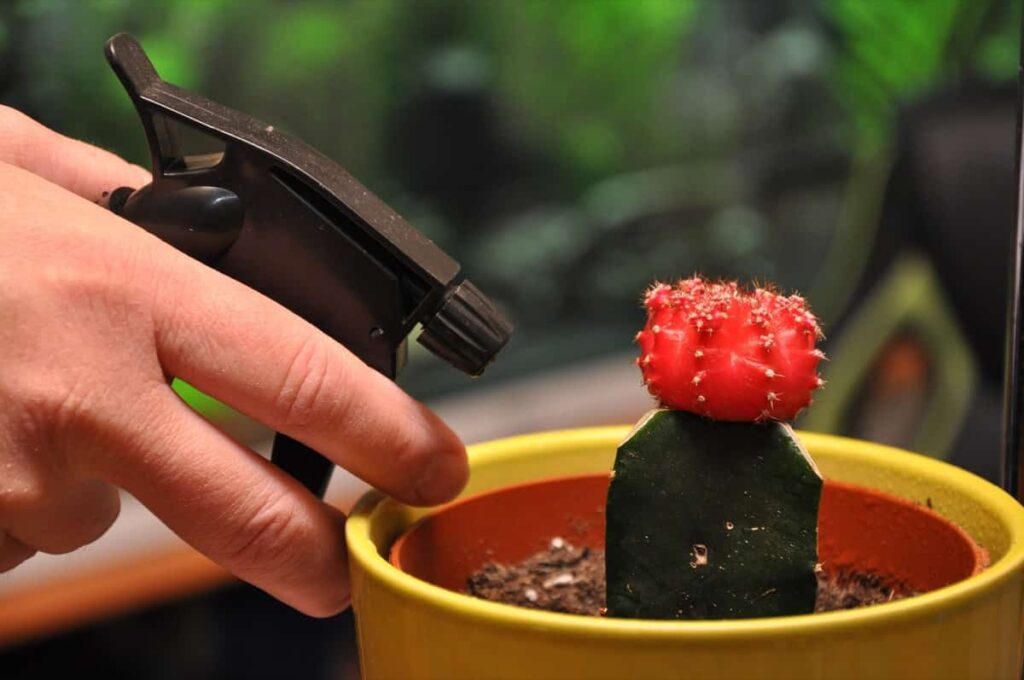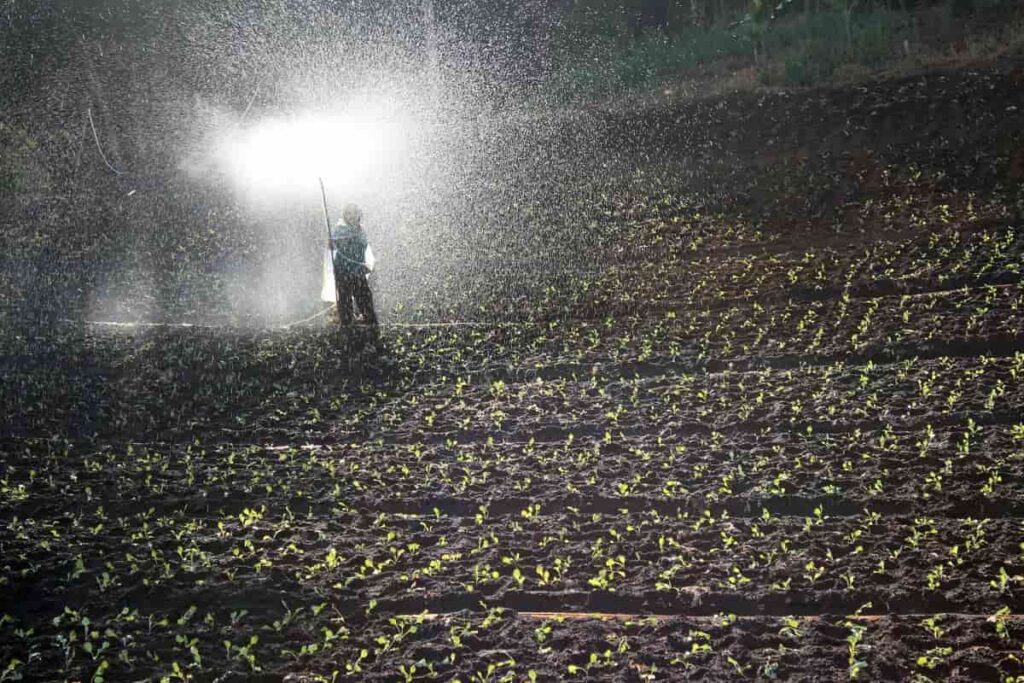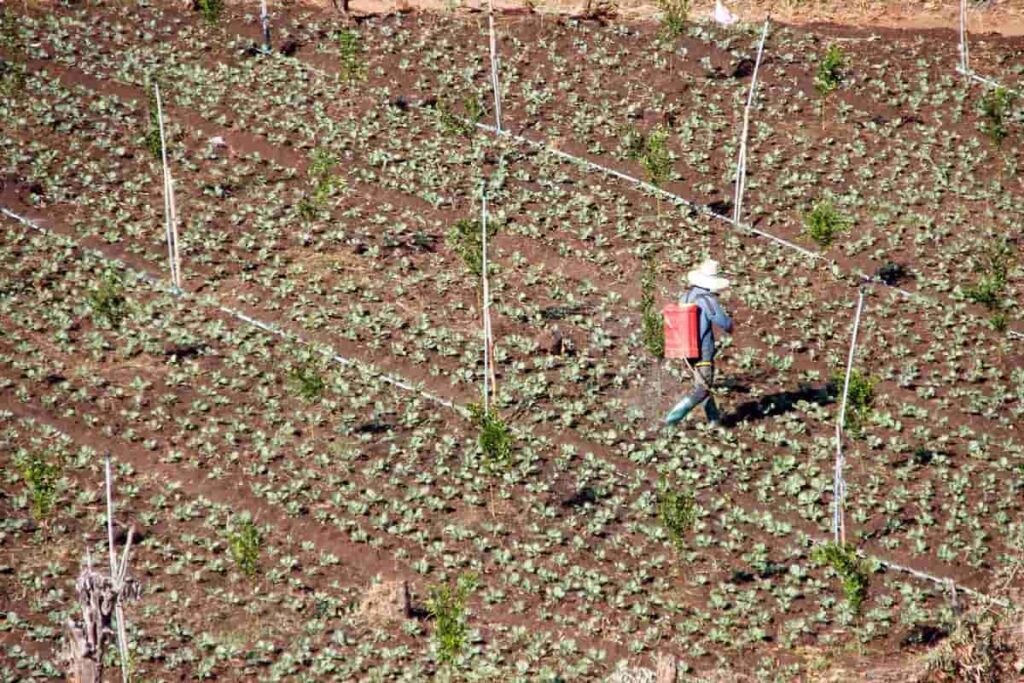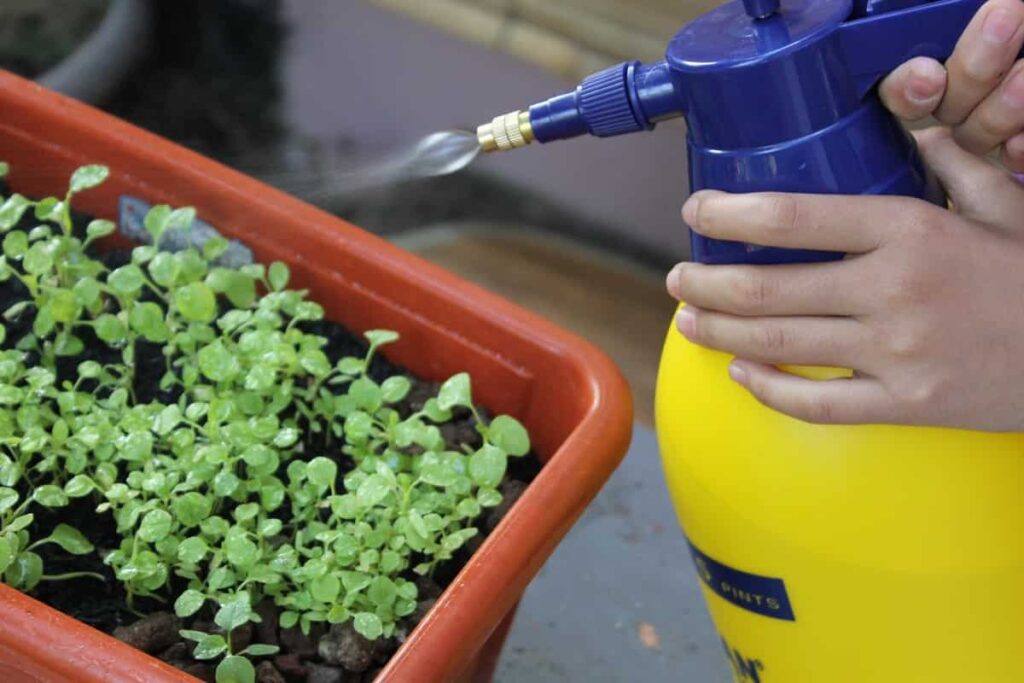Fertilizer is important for plants. It helps them to grow strong and healthy. However, there are different types of fertilizer on the market it can take time to decide which one to choose. This guide will help you understand the different types of liquid fertilizers and how to apply them to your plants. Fertilizer is important for plants. It helps them to grow strong and healthy. This guide will help you understand the different types of liquid fertilizers and how to apply them to your plants.

Liquid fertilizer guide for plants
What is liquid fertilizer?
Liquid fertilizer is a kind of fertilizer that is mixed with water and applied to plants. It is an easy way to apply nutrients to plants, and it can be used on various plants, including vegetables, herbs, lawns, potted plants, and indoors. Liquid fertilizer can be purchased at a gardening store or made at home. Homemade liquid fertilizer is often made with manure or compost tea. There are also many commercial products available. Following the manufacturer’s instructions carefully when using liquid fertilizer is important.
How to apply liquid fertilizer
When applying liquid fertilizer to your plants, you should keep a few things in mind:
- Ensure you know the dilution ratio of the fertilizer you use. This will ensure that you apply only a little.
- Be careful not to get any on leaves or stems, as this can burn the plant. You should apply the liquid fertilizers around the plant base and get some into the root zone.
- Water your plants well after applying liquid fertilizer, which will help them absorb it more effectively.
Many different types of liquid fertilizers are available on the market, so finding one that’s right for your plants shouldn’t be difficult. In addition, you can make homemade liquid fertilizer using simple ingredients like manure and compost.
When it comes to vegetables and herbs, most prefer a nitrogen-rich fertilizer. For lawns, look for a balanced liquid fertilizer that contains nitrogen, phosphorus, and potassium. Potted plants generally need a more frequent application of fertilizer than those growing in the ground. And when fertilizing indoor plants, use a diluted solution to avoid damaging leaves or stems.
In case you missed it: High-yield Hybrid Papaya Varieties in India: How to Grow, Fertilizers, Pests, and Diseases

Homemade liquid fertilizer recipes
Liquid fertilizer provides necessary plant nutrients. They are easy to apply and make your own liquid fertilizers at home with just a few ingredients. Recipes for homemade liquid fertilizers are often pretty simple. They use water as the base. This makes them very easy to apply, and they can be used on any plant.
To make your liquid fertilizer, you will need the following:
- 1 cup of water
- 1/4 cup of nitrogen-rich fertilizer such as fish emulsion
- 1/4 cup of phosphorous-rich fertilizer (such as bone meal or rock phosphate)
- 1/4 cup of potassium-rich fertilizer (such as kelp meal or wood ashes)
Mix all the ingredients in a bucket or watering can, and apply it to your plants once a week. You can also add a bit of compost to the mix to boost nutrients. There are many different liquid fertilizers available commercially, but they can be expensive. Making your own is much cheaper, and you can tailor the recipe to the specific needs of your plants.
Types of liquid fertilizer
Many different types of liquid fertilizers can be used on plants. The liquid fertilizer you use depends on the type of plants growing and the soil conditions.
Some common types of liquid fertilizers include:
- Nitrogen-based fertilizers: These fertilizers are high in nitrogen and are great for greening up lawns or boosting the growth of leafy vegetables.
- Phosphorus-based fertilizers: These fertilizers are high in phosphorus and are great for promoting blooms in flowers or fruit production in plants.
- Potassium-based fertilizers: These fertilizers are high in potassium and are great for improving the overall health of plants.
You can also find Liquid seaweed extract, a type of organic fertilizer rich in nutrients. It can be used to promote healthy growth in all types of plants.
Liquid fertilizer for vegetables
Regarding liquid fertilizer, a few different types can be used on vegetables. The most common type is an all-purpose liquid fertilizer that can be used on most plants. This fertilizer is typically made with nitrogen, phosphorus, and potassium. You can also find liquid fertilizers specifically for vegetables. These usually have a high nitrogen content, perfect for leafy greens and other vegetables that need lots of nitrogen to grow.
You can also find liquid fertilizers specifically for herbs. These are usually lower in nitrogen and higher in phosphorus, perfect for plants that need lots of phosphorus to produce flowers and fruits. Most liquid fertilizers come in concentrated form and must be diluted before use. Be sure to follow the package instructions on diluting the fertilizer properly. Once diluted, you can apply the fertilizer to the soil around your plants or onto the leaves using a watering can or spray bottle.
If you’re looking for a more natural option, you can make your homemade liquid fertilizer using compost tea or manure tea. Compost tea steeps compost in water for several days, while manure tea is made in water for several days. Both teas will give your plants the nutrients boost they need to grow healthy and strong.
Liquid fertilizer for herbs
Herbs are one of the best and easiest plants to take care of because they don’t require much attention or specialized care. However, like all plants, they need nutrients to grow and stay healthy. Fertilizer provides these essential nutrients and can be applied in several different ways. Liquid fertilizer is the most convenient type of fertilizer for herbs. It’s easy to apply and can be used on indoor and outdoor plants.
There are many different liquid fertilizers available, so choosing one specifically designed for herbs is important. Homemade liquid fertilizers are also a good option for those who want to save money or avoid chemicals. Many recipes are available online, but it’s important to ensure that your ingredients are safe for plants.
In case you missed it: How to Grow Desert Roses: Varieties, Soil, Planting, Pruning, Fertilizers, and Care

When applying liquid fertilizer to your plants, it’s important to follow the directions on the packaging carefully. Over-fertilizing can damage plants, so it’s a good idea to err on the side of caution. In general, it’s best to apply liquid fertilizer every two weeks or so during the growing season.
Liquid fertilizer for lawns
Liquid fertilizer is a great option and way to provide your lawn with the nutrients it needs. You can find different types of liquid fertilizers available, and you can make your own. Here are some tips and ideas on how to apply liquid fertilizer to your lawn:
- Choose the right type of fertilizer. There are many different liquid fertilizers, each designed for a specific purpose. For example, there are fertilizers for vegetables, herbs, lawns, potted plants, and indoor plants. Make sure you choose the right type of liquid fertilizer for your lawn.
- Apply the fertilizer evenly. When applying liquid fertilizer to your lawn, you want to ensure you’re applying it evenly. The best option to do this is with a hose-end sprayer or a watering can with a long spout.
- Follow the directions on the label. Every type of liquid fertilizer has different application instructions. Ensure you read the label carefully to know how much liquid fertilizer to use on your plants and how often to apply it.
Liquid fertilizer for potted plants
Liquid fertilizers are a great way to give your potted plants the necessary nutrients. You can apply it directly to the soil or make your homemade liquid fertilizer. Many different types of liquid fertilizers are available, so read the labels carefully to find one that is right for your plants. Vegetables and herbs typically need more nitrogen than other plants, so look for a fertilizer with high nitrogen content.
Lawns also need more nitrogen than other plants, so use a fertilizer specifically designed for lawns. Potted plants generally need less fertilizer than other plants, so be careful not to over-fertilize them. Indoor plants usually don’t need as much fertilizer as outdoor plants, but they still need some. Be sure to use a fertilizer that is specifically designed for indoor plants.
Liquid fertilizer for indoor plants
When it comes to liquid fertilizers, there are certain things you should remember to apply correctly and get the best results. This guide covers everything from making your own liquid fertilizer to what kind of plants benefit most. First and foremost, let’s start with the basics: what is liquid fertilizer? Liquid fertilizer is simply a solution of water and nutrients that can be applied directly to the roots or leaves of plants. It’s an easy and effective way to give your plants the extra boost they need to thrive.
There are many recipes for homemade liquid fertilizers, but they all typically include some combination of nitrogen, phosphorus, and potassium. These three elements are essential for healthy plant growth, so it’s important to ensure they’re included in your fertilizer mix. Commercial fertilizers are also available in liquid form and can be found at most garden stores. However, these products usually come in concentrated form, so you’ll need to dilute them before applying them to your plants.
Now that you know the basics of liquid fertilizer let’s discuss how and when to use it. A general rule for most plants is to apply liquid fertilizer every two weeks. This will make sure that your plants get a constant and appropriate supply of nutrients without overloading. If you’re using homemade liquid fertilizer, be sure to apply it on your plants early morning or late evening times.
In case you missed it: How to Make Rose Plants Bushy and Flowers Bigger: Propagation, Fertilizers, Pruning, Planting, and Care

What are examples of liquid fertilizers?
Various liquid fertilizers can be used on plants, including homemade recipes, commercial products, and household items. Here are some examples of liquid fertilizers that can be used on plants:
- Compost tea: This simple homemade fertilizer can be made home by steeping compost in water for a few days. The resulting solution can then be applied to plants.
- Fish emulsion: This is a popular commercial fertilizer made from fish waste. It is high in nitrogen and other nutrients, making it ideal for vegetables, herbs, and other fast-growing plants.
- Miracle-Gro: This is a well-known brand of liquid fertilizer containing various nutrients. It is designed for all plants, including lawns, potted, and indoor plants.
Is liquid fertilizer better than compost?
There are several benefits to using liquid fertilizer over compost, including the following:
- Liquid fertilizer is easy to apply and can be applied directly to the roots of plants.
- It is quickly absorbed by plants so that you can see results faster than with compost.
- You can tailor the nutrients in liquid fertilizer for specific needs of your plants.
- It is less likely to attract pests and disease than compost.
Which is better solid or liquid fertilizer?
There are benefits to solid and liquid fertilizers, so the best type for your plants depends on a few factors. If you’re looking for quick results, liquid fertilizer is the way to go. It’s also great for plants that are growing quickly or need an extra boost of nutrients. Solid fertilizer takes a little longer to work, but it can be just as effective. And since you don’t have to worry about over-fertilizing with solid fertilizer, it’s generally considered safer for plants.
So, which type of fertilizer is right for your plants? Here are a few things to consider:
- The type of plant you’re fertilizing: Some plants, like vegetables and herbs, benefit from quick-acting liquid fertilizer. Others, like trees and shrubs, do better with slow-release solid fertilizer.
- How often you need to fertilize: If you’re fertilizing regularly (weekly or monthly), liquid fertilizer is probably the best option. But solid fertilizer will work fine if you only need to fertilize once or twice a year.
- Your budget: Liquid fertilizer is usually more expensive than solid fertilizer. So if money is tight, solid fertilizer may be the way to go.
Banana peels liquid fertilizer disadvantages
While banana peels are an excellent source of potassium for your plants, they also come with a few disadvantages. For one, they can be a bit tricky to apply evenly. It’s also important to ensure you don’t overdo it – too much potassium can harm your plants. Additionally, banana peels can attract insects and other pests.
In case you missed it: How to Apply Bone Meal on Plants in Your Garden: What is Bone Meal? and A Guide to Make Bone Meal Fertilizer

When to apply liquid fertilizer to plants
The best time to apply liquid fertilizers to plants is when they are actively growing. This is typically in the spring and summer but can vary depending on the type of plant. For example, annuals and vegetables should be fertilized every two weeks, while perennials and shrubs can be fertilized monthly. Herbs and lawns benefit from a light fertilizer application every three to four weeks.
Potted plants should be fertilized every 15 days with a half-strength solution. And finally, houseplants can be fertilized every month with a quarter-strength solution. When applying liquid fertilizer, follow the directions on the label carefully. Over-fertilizing can damage plants, so it’s important to know how much is too much.
How much liquid fertilizer should I use?
Applying liquid fertilizer to your plants is a great way to give them the nutrients they need to grow healthy and strong. But how much liquid fertilizer should you use? The amount of liquid fertilizer you should apply depends on the type of liquid fertilizer you are using, the type of plants you are fertilizing, and the stage of growth they are in. For example, young plants will need less fertilizer than mature plants.
If you are using a commercial liquid fertilizer, make sure to follow the directions on the package label. This will ensure that you apply the correct fertilizer for your plants. Using compost tea or fish emulsion, you can also make your homemade liquid fertilizer. These DIY fertilizers are often more concentrated than commercial products, so you will need to use less.
But, again, follow the directions carefully to keep your plants from over or under-fertilizing them. In general, it is best to use less fertilizer. Over-fertilizing your plants can damage and even kill them. So start with a small amount and increase it gradually as needed. Your plants will thank you for it!
What happens if you use too much liquid fertilizer?
If you put too much liquid fertilizer on your plants, they can become overfed and may experience problems such as nutrient burn, leaf scorch, or root rot. Overfeeding can also lead to excessive growth, making plants susceptible to pests and diseases. If you think you have overfed your plants, flush the soil with water to leach out the excess fertilizer and help your plants recover.
How quickly does liquid fertilizer work?
Liquid fertilizers are best option to give your plants a quick boost of nutrients. They can be applied directly to the soil or leaves, and the plant quickly absorbs them. There are different liquid fertilizers, so you should research and choose the one that best suits your plants. You can easily make your own liquid fertilizers home using simple ingredients like manure, compost, and water.
Whether you’re growing vegetables, herbs, or potted plants, liquid fertilizer can help them thrive. For lawns, liquid fertilizer is a great alternative to chemical-based products. And if you’re growing plants indoors, liquid fertilizer can help them get the nutrients they need without putting off harmful fumes.
In case you missed it: Roma Tomato Growing Guide: For Pots, Ground, Raised Beds, and Buckets

What is one disadvantage of liquid fertilizer?
While liquid fertilizer is a great way to boost your plants, there are some disadvantages (cons) to using this type of fertilizer. One downside is that liquid fertilizer can be difficult to apply evenly, especially if you use it on a large area. This can lead to uneven growth and brown patches in your lawn or garden.
Additionally, liquid fertilizer can wash away easily if it rains or if you water your plants too much. This means that you will need to reapply it more often than other types of fertilizer. Finally, liquid fertilizer can be costly, especially if you buy it in concentrated form.
Conclusion
Liquid fertilizers are an excellent way to provide nutrients to your plants. Liquid fertilizers are easy to apply and can be used on various plants. Liquid fertilizers can also be mixed with other products, such as pesticides or herbicides, to create a custom solution for your garden.
- Management Pests and Diseases in Your Cotton Field
- Sheep Farming Business Plan for Beginners
- Aquaponic Farming at Home: A Step-By-Step Guide
- Profitable Village Farming Business Ideas in 2024
- High-Yield Aquaculture: Fast-Growing Fish for Farming
- Effective Fish Pond Construction Techniques for Beginners
- Irrigation and Water Management in Pineapple Farming
- Blossom to Harvest: Mastering Flowering and Pollination in Papaya Farming
- Pig Fattening Essentials: From Selection to Sale for Beginners
- Raising Wagyu Cattle: A Complete Guide for Premium Beef Production
- Soil Types and Their Water Holding Capacity
- Optimizing Irrigation Schedules for Coconut Groves for Enhanced Yield
- Espresso Your Garden: Coffee Grounds for Healthier Acid-Loving Plants
- The Best Soil Mix for Snake Plants: How to Mix Your Own Snake Plant Soil
- Green Thumb Success: Expert Tips for Cultivating Greenhouse Beans All Year Round
- Bloom All Year Round: The Ultimate Guide to Indoor Hyacinth Care
- Eco-Friendly Gardening: How to Make Liquid Fertilizer from Kitchen Waste
- Ultimate Guide to Grow Anise in Pots: Explore Seed Propagation to Harvesting
- Guide to Raising Chester White Pigs: Discover Breed Facts to Growth Management
- Mastering the Elegance: The Ultimate Guide to Weeping Cherry Tree Care, Planting, and Maintenance
- Ultimate Guide to Planting Garlic in Grow Bags: Growing Strategies for Beginners
- How to Fix Spider Plant Leaf-Related Problems: Natural and Organic Remedies
- 10 Reasons Why Your Tulsi Plant is Shedding Leaves: Home Remedies and Solutions
- Optimizing Growth and Yield: The Advantages of Palm Bunch Ash Fertilizer
- Utilizing Neem Oil Extract as a Natural Pesticide for Hydrangea
- From Soil to Harvest: Various Ways in Which Farmers Can Use AI Tools
- Steps to Encourage and Induce Citrus Flowers: A Comprehensive Guide
- How to Fix Snake Plant Leaf-Related Issues: Natural and Organic Remedies
- Transform Your Garden into a Fragrant Oasis with Raat Ki Rani (Night Blooming Jasmine)
- Discover the Ideal Chicken Breeds for Philippine Farms
- How to Create a Poultry Egg Farm Business Plan for Profits
- Grow Lemon Cucumbers Like a Pro: Insider Techniques for Bountiful Yields
- Ultimate Guide to Caring for Your Pink Princess Philodendron: Tips for Thriving Variegation
- Areca Nut Profit Per Acre: Calculating Yield and Cost of Cultivation
- How Kaveri Chicken is Becoming a More Profitable Breed in Indian Backyards
- Transform Your Barn: 9 Steps to Convert a Horse Stall into a Chicken Coop
